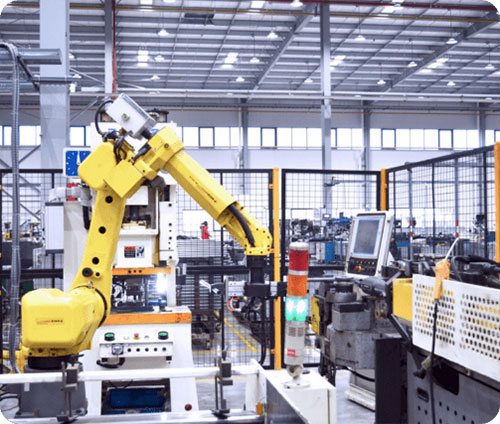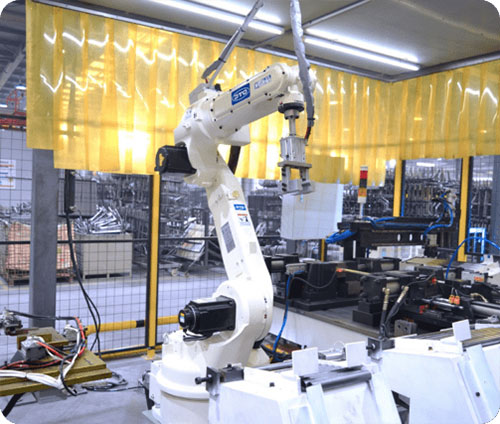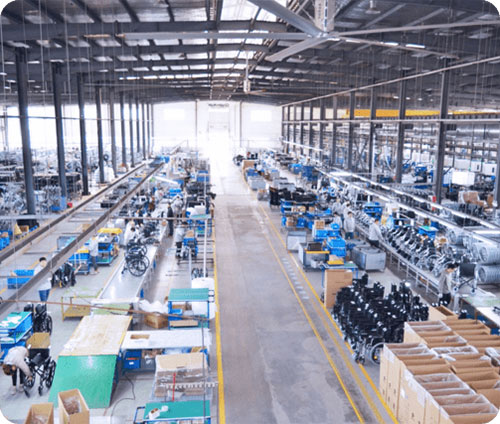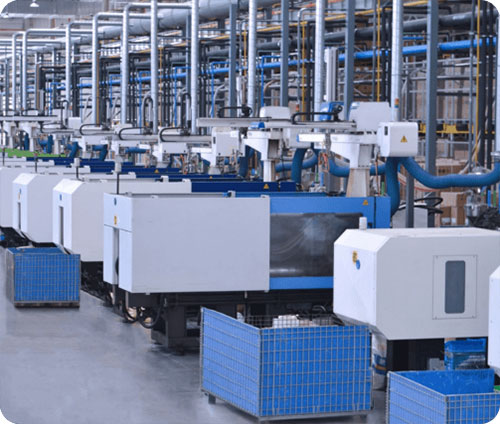Mobility Aids Manufacturing-Capabilities
Ageally is a Chinese Leading Manufacturer of Mobility Aids Equipment, With over 15 years of professional experience in the Rehabilitation and Medical industry, our industry-leading production equipment and efficient production processes ensure that the products you need can be put into the market with high quality efficiency and popularity.
Manufacturing Capabilities
Ageally focus on the management of production links and continuously optimize the manufacturing process to improve productivity, ensuring the Mobility Aids you required with high capacity and quality, making life easier and more dignified for seniors and individuals with disabilities.
Sufficient production capacity
Our annual production capacity is over 3 million by our partner factory, we canmeet the market needs.
Intelligent Manufacturing
Cooperate with international automation and intelligent enterprises to create top mobility aids.

Material Selection and Preparation
Mobility Aids Materials: Common materials include aluminum, steel, titanium (for lightweight wheelchairs), and durable plastics.
Cutting and Shaping: Raw materials are cut into specific lengths and shapes using methods like sawing, shearing, and CNC machining.

Frame Construction
Bending: Metal tubing is bent into the desired shapes for the wheelchair frame using specialized bending machines.
Joining: Frame components are joined together through welding (MIG, TIG, or spot welding), bolting, or riveting. This creates the basic structure of the Mobility Aids.

Component Production
- Seat and Backrest: These are typically made from fabric, vinyl, or molded plastic. They are cut, sewn, or molded to shape and then attached to the frame.
- Wheels: Wheels are assembled from tires, rims, spokes, and hubs.
- Other Components: Footrests, armrests, brakes, and other accessories are manufactured separately and prepared for assembly.

Assembly
- Sub-assembly: Smaller components are assembled into larger modules (e.g., the seat assembly, the wheel assembly).
- Final Assembly: All the modules are brought together and attached to the Mobility Aids frame. This includes attaching the wheels, seat, backrest, armrests, footrests, brakes, and any other accessories.

Finishing and Packaging
Finishing: This may involve painting, powder coating, or other surface treatments to protect the wheelchair and give it a finished appearance.
Packaging: The Mobility Aids is carefully packaged for shipping and delivery.
Important Considerations
Customization: Many Mobility Aids are customized to meet the specific needs of the user. This may involve adjusting the size, seat height, armrest position, and other features.
Production Scale: The manufacturing process can vary depending on the production scale. Smaller manufacturers may use more manual processes, while larger manufacturers may use more automated processes.
